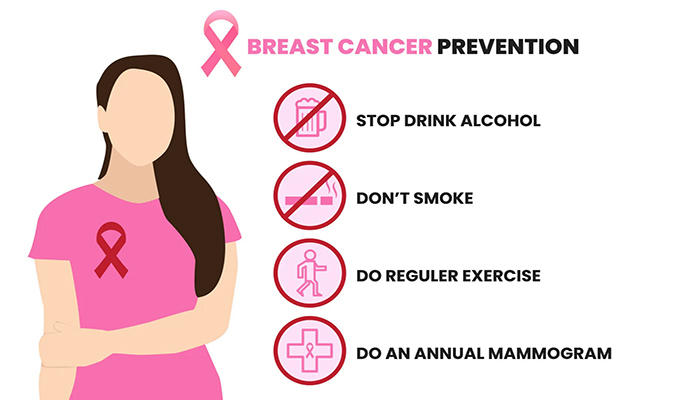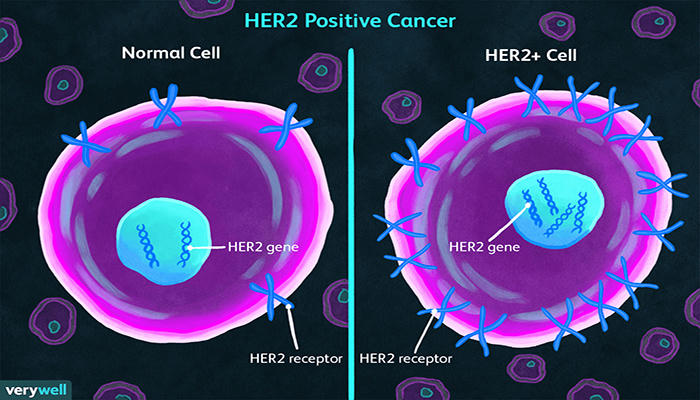Understanding Estrogen-Positive Breast Cancer: Early Signs and Why Early Detection Matters
Estrogen-positive breast cancer is one of the most common types of breast cancer, accounting for a significant portion of cases. In this type of cancer, the growth of cancer cells is fueled by estrogen, a hormone naturally present in the body. Early detection is critical, as it can dramatically improve treatment outcomes, reduce the physical and emotional burden of the disease, and enhance overall survival rates. By recognizing the early signs and staying proactive with regular checkups, individuals can take control of their health and improve their quality of life.

What is Estrogen-Positive Breast Cancer?
Estrogen-positive breast cancer occurs when cancer cells have receptors that bind to estrogen, allowing the hormone to stimulate their growth. Normally, estrogen plays a vital role in maintaining health, but in this case, it becomes a driver for cancer progression.
How It Works: Estrogen acts like a "key" that fits into the "lock" (receptors) on cancer cells, triggering rapid cell division and growth. It also helps cancer cells survive longer and access more nutrients.
Treatment Approach: Therapies often focus on reducing estrogen levels or blocking its effects to slow or stop cancer growth.
Early Signs of Estrogen-Positive Breast Cancer
Being aware of the early signs can help you catch potential issues before they escalate. Common symptoms include:
Breast Lumps: A hard, painless lump or thickening in the breast or underarm area.
Nipple Changes: Dimpling, inversion, or unusual discharge (such as blood or colored fluid).
Skin Changes: Redness, swelling, or an "orange peel" texture on the breast skin. In some cases, skin ulcers may develop.
Breast Swelling: Unexplained swelling or tenderness in the breast or underarm.
Texture Changes: The breast may feel lumpy or rough to the touch.
While these symptoms don’t always indicate cancer, they warrant a visit to your doctor for further evaluation.
How to Perform a Breast Self-Exam
Regular self-exams are a simple yet powerful way to detect changes early. Here’s how to do it:
Choose the Right Time: Perform the exam a few days after your period ends, when breasts are least swollen.
Observe Your Breasts:
•Stand in front of a mirror and look for changes in size, shape, or skin texture.
•Check for nipple changes, such as inversion, redness, or discharge.
Feel for Lumps:
•Use the pads of your fingers to gently press your breast in circular motions, covering the entire area, including the underarm.
•Feel for any unusual lumps, bumps, or thickening.
Check Your Nipples: Gently squeeze your nipples to check for discharge.
Follow Up: If you notice anything unusual, contact your doctor immediately.

Why Early Detection Matters
Catching estrogen-positive breast cancer early offers numerous benefits:
Higher Cure Rates: Early-stage cancers are easier to treat and often have better outcomes.
Simpler Treatment: Smaller tumors may require less invasive surgery and fewer treatments, reducing side effects.
Improved Survival: Early intervention can prevent cancer from spreading to other parts of the body.
Better Quality of Life: Timely treatment minimizes the impact on daily life and helps patients recover faster.
Lower Costs: Early diagnosis and treatment are generally less expensive than managing advanced cancer.
A Real-Life Example: Maria’s Story
Maria, a 45-year-old woman, made breast self-exams a regular part of her routine. One day, she noticed a small lump in her right breast. Although it didn’t cause pain, she decided to consult her doctor. After a series of tests, including an ultrasound and biopsy, she was diagnosed with early-stage estrogen-positive breast cancer.
Thanks to early detection, Maria’s treatment plan included targeted hormone therapy and a partial mastectomy. Today, she is recovering well and continues to live a full, active life. Her story highlights the importance of staying vigilant and taking action at the first sign of change.
Conclusion: Take Charge of Your Health
Early detection of estrogen-positive breast cancer can save lives. By recognizing the early signs, performing regular self-exams, and seeking medical advice promptly, you can significantly improve your chances of successful treatment and long-term survival.
Remember, early diagnosis not only enhances treatment effectiveness but also reduces the physical, emotional, and financial toll of the disease. Make breast health a priority—your future self will thank you.
Final Thought: Knowledge is power. By staying informed and proactive, you can take meaningful steps to protect your health and well-being. Don’t wait—start your self-exam routine today and encourage others to do the same. Together, we can fight breast cancer and save lives.
